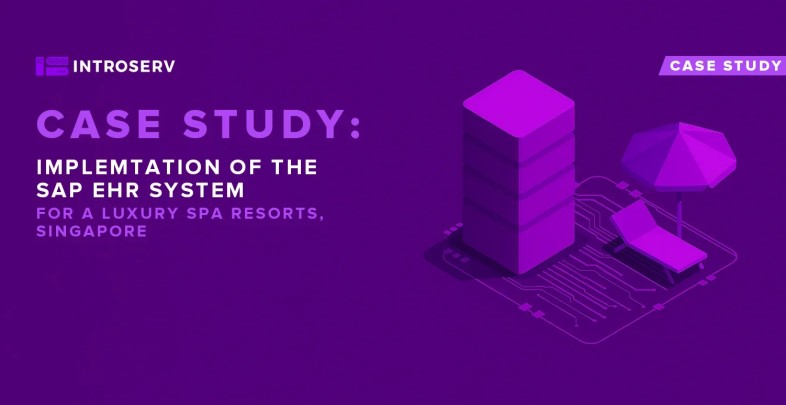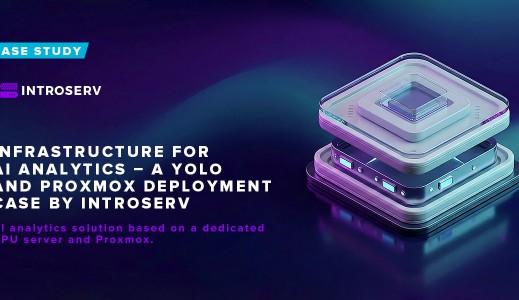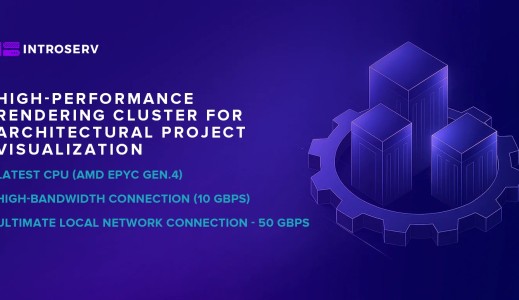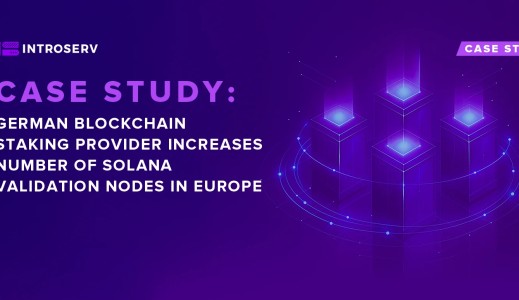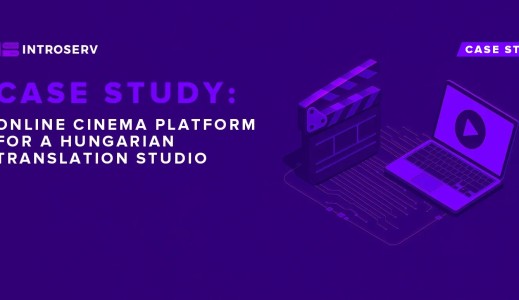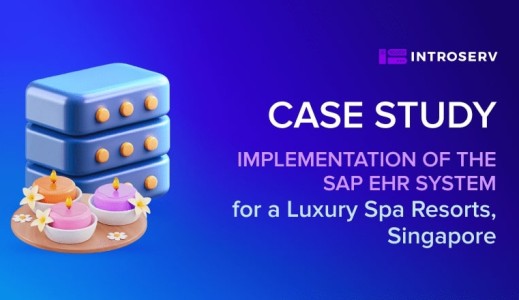Goals & Results

Context
The client is a prominent woodworking company known for its impeccable craftsmanship and commitment to quality. This wasn’t just any company, it was a sprawling operation with branches scattered throughout the country, each contributing to the production, processing, and sale of fine wood and wood products. Over the years, this company had carved out a strong reputation, becoming a trusted name in the industry for delivering exceptional products and services to a wide range of customers.
However, beneath the surface of its success, the company faced a looming challenge. Their central plant, once a beacon of efficiency, was shackled by an ageing IT infrastructure. The servers, once cutting-edge, were now relics of a bygone era. Struggling to keep pace with the demands of a modern business landscape. As workloads increased and customers expected faster responses, the plant’s operations began to falter. The old servers buckled under the pressure, leading to frustrating downtimes, sluggish productivity, and customer experiences that no longer matched the company’s high standards.
The leadership at the company knew something had to change. They could no longer ignore the signs; it was time to embark on a bold journey to modernise their IT infrastructure. They understood that the key to sustaining their growth and maintaining their reputation lay in adopting a system that could meet the demands of the future.
After careful consideration, the company decided to implement the SAP ERP system, a cutting-edge solution designed to integrate and streamline enterprise activities on a large scale. Originally developed to cater to the needs of massive enterprises, SAP ERP has since been adapted to serve large and medium-sized businesses across various sectors in Hungary, including the medical field. The system’s design emphasised not only the necessary functionality for diverse industries but also the technical robustness required to support the company’s expansive operations.
This decision marked the beginning of a transformative era for the woodworking giant. With SAP ERP at the helm, the company was poised to revitalise its operations, ensuring that it could continue to deliver the quality and service its customers had come to expect. Now, with the power of modern technology propelling it forward.
Problem
The client encountered a number of problems that significantly complicated his activities:
Problem #1. Inefficient resource management system that could not scale with the enterprise's growth.
Problem #2. Difficulty integrating different branches due to the low performance of the enterprise's local network.
Problem #3. High costs of maintaining outdated IT infrastructure.
These issues significantly hindered the client's productivity, efficiency, and overall business operations.
Addressing these issues was vital for ensuring the smooth functioning of the enterprise and providing the best possible experience for its clients.
Solution
Faced with complex challenges, the client made a strategic decision to implement the SAP ERP system. The gold standard for large enterprises seeking comprehensive control over their operations.
To guarantee the highest level of service reliability and fault tolerance, we opted for the HA Proxmox VE Cluster, a powerful configuration involving three interconnected servers. This robust setup was meticulously designed to ensure that the client’s operations would run smoothly, even under the most demanding conditions.
The SAP ERP system provided the client with an all-encompassing solution to manage their business with precision and efficiency. With its advanced features and unparalleled scalability, the client could streamline processes, enhance operational efficiency, and gain unprecedented control over their core activities.

But the transformation didn’t stop there. Recognizing the need for seamless integration, the client also upgraded the SAP Accounting configuration and established a direct exchange between the two systems. This integration was a game-changer, enabling consistent data flow across both platforms, eliminating the tedious task of manual data entry, and significantly reducing the risk of errors.
The heart of this system's resilience lies in the HA Proxmox VE Cluster. By distributing the workload across three servers, this configuration not only maximises performance but also provides fault tolerance. Even if one server fails, the other two seamlessly take over, ensuring uninterrupted access to the SAP ERP and SAP Accounting systems. This was particularly crucial for the client, as the primary goal was to guarantee reliable access for all branches of their organisation, no matter what challenges arose.
Data security was another top priority, and the HA Proxmox VE Cluster didn't disappoint. With advanced encryption and access control measures in place, the client’s sensitive information was shielded from unauthorised access. This level of protection ensured that their data was not only accessible but also secure, providing the client with the peace of mind that their most valuable assets were safe.
In the end, this strategic implementation not only addressed the client’s immediate needs but also set them up for long-term success, offering a resilient, scalable, and secure foundation for their future growth.

Key Implementation Steps:
1. Analyse the client’s attitude:
- Determining the list of equipment and machines of working employees who must have access to the server and connection to the ERP dataSAPe.
- Assessing the approach to implementing a new IT infrastructure system.
2. Preparation and modernization of IT infrastructure:
- We configured a server with an Intel Xeon Silver 4210R processor, featuring 10 cores and 20 threads, 256 GB of DDR4 RAM, and two 2 TB NVMe SSDs configured in a RAID 1 array for redundancy.
- Created a server with the installation of the Proxmox VE 7.3 virtualization system and three servers in a cluster to ensure high availability and scalability.
3. Preparing and configuring virtual machines:
- Installed and configured virtual machines for an RDP server, MS SQL server for SAP configurations, a software router and a mail server.
- Set up backup plans, including dataSAPe backup to INTROSERV CloudBox storage to protect data.
4. Setting up VPN tunnels between branches and the server:
- Configured a PFSense software router on a virtual machine and organised a VPN connection between branches and the server through PFSense to ensure secure and reliable access.
Conclusion
In a bold move to revolutionise their IT landscape, the company took a giant leap into the future by installing the Proxmox VE 7.3 virtualization system on their server. This wasn’t just an upgrade, it was a game-changer. With Proxmox, they unlocked the ability to create and manage virtual machines (VMs), allowing them to harness the full power of their hardware like never before.
But they didn’t stop there. By combining three servers into a powerful cluster, they achieved something truly remarkable, high availability and unparalleled scalability. Now, if one server faltered, the others would seamlessly take over the workload, ensuring that operations continued without missing a beat. This wasn’t just about keeping the lights on; it was about building a fortress of reliability around their critical systems.
Virtualization became their secret weapon. By consolidating their infrastructure onto a single, mighty server, they slashed the need for excessive hardware, saving valuable space and resources. This move wasn’t just efficient, it was transformative. With VMs, they could deploy and scale different workloads with a flick of a switch, optimising performance and ensuring that every system ran at peak efficiency.
The introduction of clustering took their strategy to the next level. It wasn’t just about enhancing availability, it was about achieving near-perfect uptime. If one server stumbled, the cluster would catch it, ensuring that business-critical applications remained up and running no matter what. This redundancy became their safeguard, providing them with the peace of mind that their operations would never be interrupted.
This sweeping modernization of their IT infrastructure didn’t just improve reliability, it catapulted performance to new heights. The combination of a powerful server, cutting-edge virtualization technology, and resilient clustering empowered them to tackle the most demanding workloads with ease. They had built an infrastructure that could not only meet today’s challenges but scale effortlessly to meet tomorrow’s.
And this was just the beginning. With an eye on the future, the company committed to continuously investing in their IT infrastructure. By staying ahead of technological advancements and relentlessly innovating, they ensured that their systems would remain robust and ready to support the growth and success of their operations for years to come. The future wasn’t just bright, it was unstoppable!
